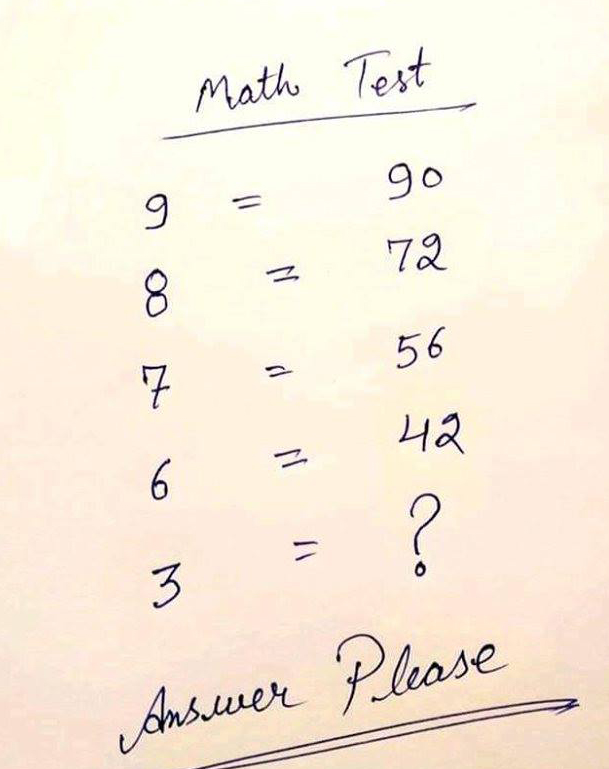Have you ever come across a puzzle that looks easy at first but leaves you second-guessing your answer? Today’s math challenge is one of those brain teasers that might seem simple, yet it requires a bit of logical reasoning. Are you ready to put your math skills to the test? Let’s get started!
The Puzzle: What’s the Missing Number?

Take a look at the pattern below and try to figure out the missing number.
- 9 = 90
- 8 = 72
- 7 = 56
- 6 = 42
- 3 = ?
At first glance, there doesn’t seem to be an obvious connection between the numbers. But if you analyze the pattern carefully, you’ll notice a hidden rule. Can you crack the code?
Common Mistakes People Make
Many people approach puzzles like this by immediately trying basic arithmetic—adding, subtracting, or randomly multiplying numbers. However, jumping to conclusions too quickly can lead to mistakes. Here are some common errors:
- Assuming the numbers are related through simple addition or subtraction
- Overcomplicating the pattern instead of looking for a consistent sequence
- Forgetting to consider multiplication relationships
Instead of rushing, take a moment to analyze the logic behind the given numbers. The key is to find a pattern that applies consistently across all cases.
Step-by-Step Solution
To solve this puzzle, let’s look for a mathematical pattern:
- For the first equation: 9 = 90
- If we multiply 9 by the next number in sequence (10), we get 90.
- 9 × 10 = 90
- For the second equation: 8 = 72
- 8 × 9 = 72
- For the third equation: 7 = 56
- 7 × 8 = 56
- For the fourth equation: 6 = 42
- 6 × 7 = 42
Each number on the left is being multiplied by the number that follows it.
Now, applying the same logic to the missing number:
- 3 should be multiplied by the next number in sequence, which is 4.
- 3 × 4 = 12
The missing number is 12.

Did You Get It Right?
Video: Only 1% can solve this
If you solved it quickly, well done! If not, don’t worry—puzzles like this are great for sharpening your problem-solving skills. Recognizing numerical patterns takes practice, and each time you try, you get a little bit better at thinking logically.
Challenge Yourself with More Puzzles

Now that you’ve cracked this puzzle, why not try another? Math riddles are a fantastic way to keep your brain sharp, and they can be both fun and educational. Share this challenge with your friends and see how quickly they can find the answer!


